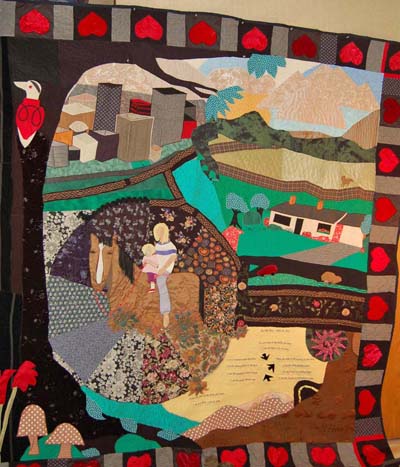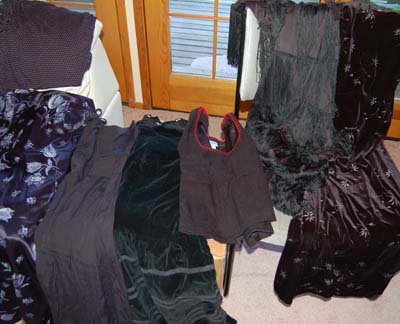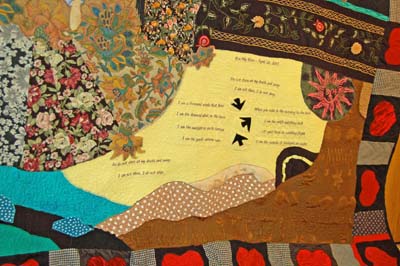
About five months after I started Rhino Quilting I was asked if I wanted to make a quilt for a lady whose daughter was murdered. The mother wanted a quilt made out of the daughter’s clothes. The daughter (I will call her Karin) was in her thirties, had moved to Alaska with her job, and was thriving in her career. Karin was doing so well she had even managed to buy her own little house and life was good. Then tragedy struck – the kind that we read about in crime novels, the kind we see on TV cop shows, the kind that rarely happens even to other people – Karin was brutally murdered by a man she knew.

This had happened five years previous and all this time the mother had struggled with her shock and Her grief, even having to attend the criminal trial and speak for Karin at the trial. Time had barely dimmed the mother’s grief and she still had all of Karin’s lovely clothes, being reluctant to let them go. Karin had been a lively spirited artistic lady who was warm and caring, loved horses, loved her garden and her friends and her career. She had dressy clothes made for fun, in satin and velvet and bright gorgeous colors. Some of them looked like flapper dresses, complete with tassels and short skirts.

The first thing I did was study the clothes and let them “speak”. During the process of making this quilt, I did feel as if the clothes – or Karin herself – were guiding me.
An artistic friend suggested I veer away from traditional designs and do something more personal with the clothes. There were many beautiful black outfits so I started out making a large black tree.

Since I wanted it at the edge of the “picture” I immediately placed it up on a hill overlooking the city of Anchorage with the mountains beyond. A cream satin dress and its lining made nicely shimmering mountains in the distance. Wool skirts and various linings were used in the buildings. Buttons were used for car wheels and red trim was used for the railings of a balcony on one of the buildings.

I continued the “story in pictures” using pictures of Karin’s house and a picture of her as a child on a horse with her mother.

Karin had about eight skirts or dresses covered with various floral designs. From them I made a wheel as a background for the horseback portraits.

I had fun making leaves for the black-trunked tree using Karin’s aqua polka-dotted dress. A brown plaid skirt made a great fence line and the trim of one of her skirts became roads.

I finished the patchwork with Karin lying on her back (wearing her wide-brimmed black hat) and leaning against a brown tree trunk, looking over her life. In front of her on a yellow background I embroidered lines from famous poem by Mary Elizabeth Frye:
- Do not stand at my grave and weep,
- I am not there, I do not sleep.
- I am in a thousand winds that blow,
- I am the softly falling snow.
- I am the gentle showers of rain,
- I am the fields of ripening grain.
- I am in the morning hush,
- I am in the graceful rush
- Of beautiful birds in circling flight,
- I am the starshine of the night.
- Do not stand at my grave and weep
- I am not there. I do not sleep.

I bordered the quilt with red hearts to represent Karin’s great love of life and her family and friends.

Closeup of quilted top:

Closeup of quilted bottom:

The final quilt was king-sized and could be either for a bed or for a wall hanging. Karin’s mother was using it both ways, I am told.

Making this – my first bereavement quilt – was a complete joy. Instead of dwelling on the reasons why I happen to have Karin’s clothes, I felt instead as if she were standing beside me, guiding me and talking to me with spirit and joy, being my muse. And most of all, I kept in mind that somehow and in some way this quilt could help Karin’s mother.
One bittersweet note: When Karin’s mother was looking at the quilt in awe, she asked me if I had used the yellow dress. I showed her parts of the dress where I had embroidered the poem, telling her that the dress had a pink stain on it, so I had tried to cut around the stain. She replied, ” Karin was wearing that yellow dress the last time I saw her. We had gone out to dinner and she spilled wine on her dress.” You could still find a few faint spots I had missed.
